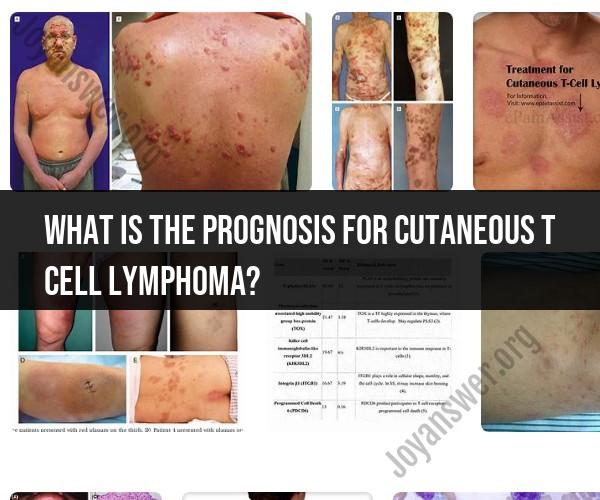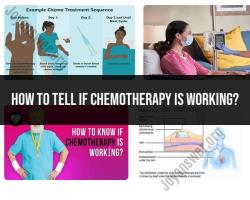What is the prognosis for cutaneous T cell lymphoma?
The prognosis for cutaneous T-cell lymphoma (CTCL) can vary widely depending on several factors, including the specific type of CTCL, the stage at which it is diagnosed, the individual's overall health, and the response to treatment. CTCL is a relatively rare type of non-Hodgkin lymphoma that primarily affects the skin. The most common form of CTCL is mycosis fungoides, which typically progresses slowly.
Here are some general considerations regarding the prognosis for CTCL:
Early Detection: When CTCL is diagnosed at an early stage and is limited to the skin (stage I or II), the prognosis is generally more favorable. In these cases, the disease is often manageable, and individuals can have a relatively normal life expectancy.
Advanced Stages: If CTCL progresses to more advanced stages (stage III or IV) and involves other organs or tissues beyond the skin, the prognosis becomes less favorable. Advanced-stage CTCL is typically associated with a more aggressive disease course and may require more intensive treatment.
Response to Treatment: The response to treatment plays a significant role in determining the prognosis. Some individuals with CTCL respond well to treatment and experience long periods of remission, while others may have a more resistant form of the disease.
Treatment Options: There are various treatment options for CTCL, including topical therapies, phototherapy, radiation therapy, systemic chemotherapy, and targeted therapies. The choice of treatment depends on the specific type and stage of CTCL. Advances in treatment options have improved the outlook for many individuals with CTCL.
Overall Health: An individual's overall health and ability to tolerate treatment can impact the prognosis. Those with other underlying health issues may have a more complicated course of treatment.
Mycosis Fungoides vs. Sézary Syndrome: The prognosis can differ between mycosis fungoides (limited to the skin) and Sézary syndrome (involving blood and skin). Sézary syndrome is typically associated with a worse prognosis due to its systemic nature.
It's important to note that CTCL is a heterogeneous group of diseases, and outcomes can vary from person to person. Regular medical monitoring, early detection, and prompt treatment can significantly improve the prognosis and quality of life for individuals with CTCL. Many people with CTCL can lead relatively normal lives and manage their condition with appropriate medical care. However, for some, CTCL may be a more challenging condition to treat and control. Patients should work closely with their healthcare team to develop a personalized treatment plan and address their specific needs.
Understanding Cutaneous T-Cell Lymphoma: What is the Prognosis?
Cutaneous T-cell lymphoma (CTCL) is a type of cancer that affects the skin. It is a relatively rare type of cancer, but it is the most common type of non-Hodgkin lymphoma.
The prognosis for CTCL varies depending on the type and stage of the disease. In general, however, the prognosis for CTCL is good. Most people with CTCL can be treated successfully with early intervention.
Factors that Influence the Prognosis of Cutaneous T-Cell Lymphoma
The following factors can influence the prognosis of CTCL:
- Type of CTCL: There are many different types of CTCL, and some types have a better prognosis than others.
- Stage of CTCL: The earlier the stage of CTCL is diagnosed, the better the prognosis.
- Patient's age and overall health: Younger patients with CTCL tend to have a better prognosis than older patients. Patients with overall good health also tend to have a better prognosis than patients with other health problems.
Treatment Options and Survival Rates for Cutaneous T-Cell Lymphoma
There are a variety of treatment options available for CTCL. The best treatment option for a particular patient will depend on the type and stage of the disease, as well as the patient's overall health.
Some common treatment options for CTCL include:
- Skin-directed therapies: These therapies are applied directly to the skin and can include topical medications, light therapy, and radiation therapy.
- Systemic therapies: These therapies are taken by mouth or injected into the bloodstream and can include chemotherapy, immunotherapy, and targeted therapy.
The survival rates for CTCL vary depending on the type and stage of the disease. However, in general, the survival rates for CTCL are good. For example, the 5-year survival rate for mycosis fungoides, the most common type of CTCL, is over 90%.
Support and Resources for Individuals with Cutaneous T-Cell Lymphoma
There are a number of support and resources available for individuals with CTCL. These resources can provide patients with information about the disease, treatment options, and coping strategies.
Some support and resources for individuals with CTCL include:
- The Cutaneous Lymphoma Foundation: This organization provides information and support to patients with CTCL and their families.
- The Leukemia and Lymphoma Society: This organization provides information and support to patients with all types of leukemia and lymphoma, including CTCL.
- The American Cancer Society: This organization provides information and support to patients with all types of cancer, including CTCL.
Ongoing Research and Developments in Managing Cutaneous T-Cell Lymphoma
There is ongoing research into new and improved treatments for CTCL. Some of the promising new treatments for CTCL include:
- Immunotherapy: Immunotherapy is a type of cancer treatment that uses the body's own immune system to fight cancer cells. Immunotherapy has shown promising results in the treatment of CTCL.
- Targeted therapy: Targeted therapy is a type of cancer treatment that targets specific molecules or pathways that are involved in the growth and survival of cancer cells. Targeted therapy has also shown promising results in the treatment of CTCL.
Researchers are also working to develop new ways to diagnose and stage CTCL. This is important because early diagnosis and staging can lead to better treatment outcomes.
Conclusion
The prognosis for CTCL is good, especially when it is diagnosed and treated early. There are a variety of treatment options available for CTCL, and new treatments are being developed all the time. If you have CTCL, there are a number of support and resources available to help you.













